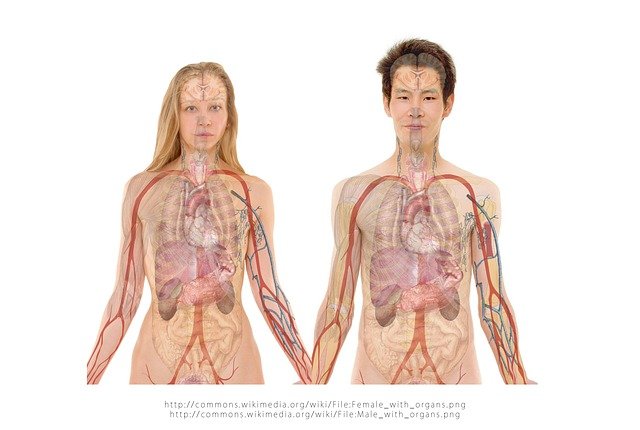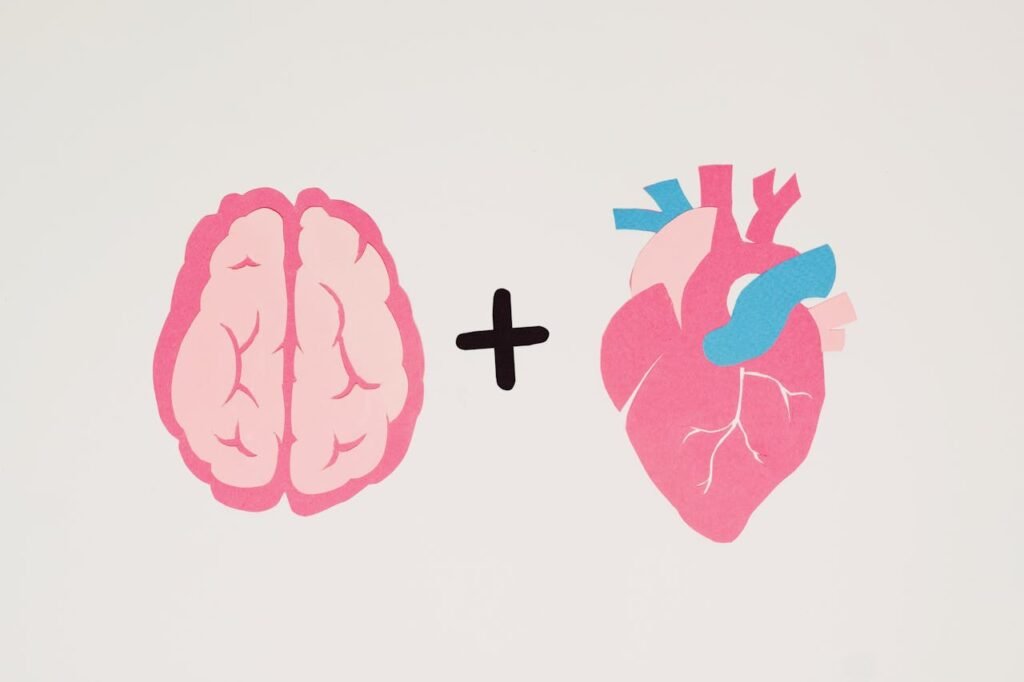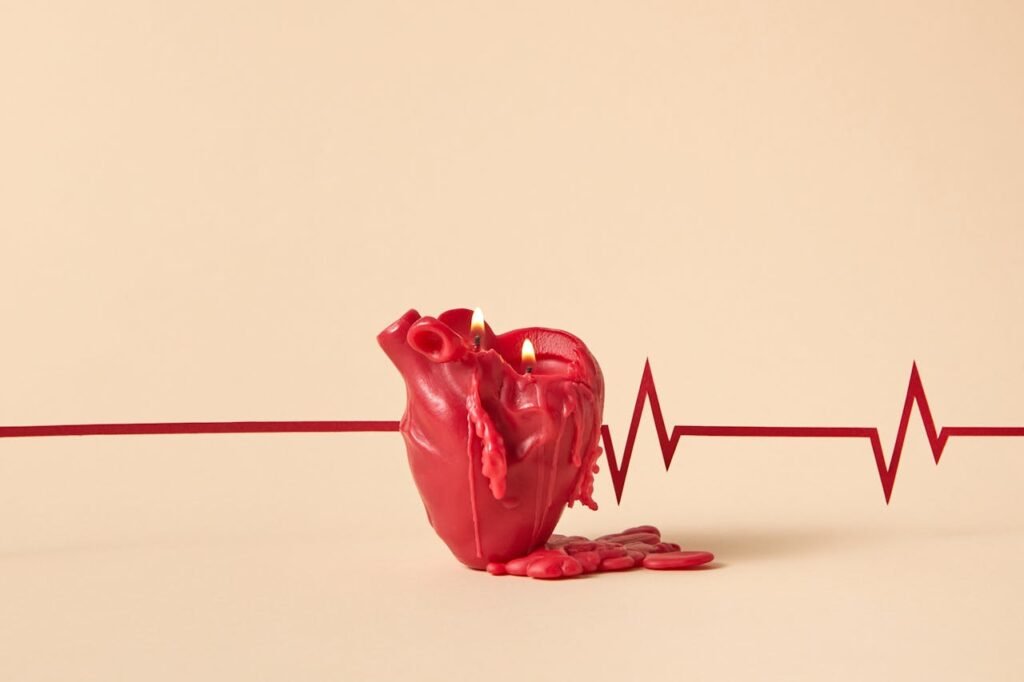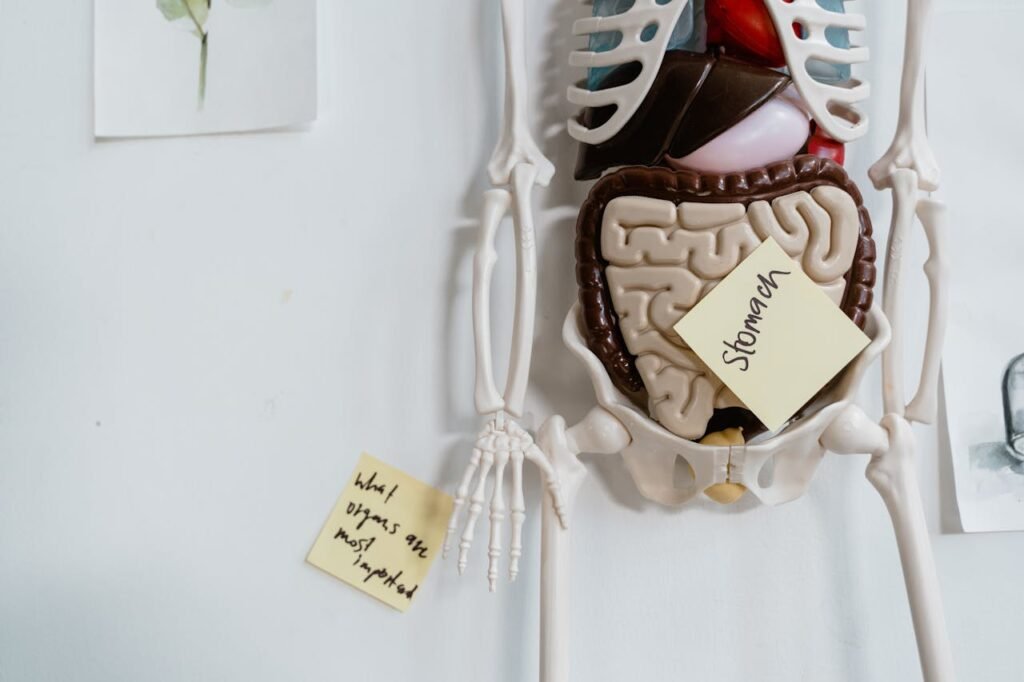Right now, even as you read this, something inside your chest is working non-stop.
It doesn’t take breaks.
It doesn’t need reminders.
It just keeps going…
Beat after beat after beat.
That something is your heart—and it’s not just any organ. It’s the hardest working muscle in your whole body.
Your heart doesn’t sleep. It pumps blood all day and night, sending oxygen and nutrients to every tiny corner of you—from your brain to your toes. Without your heart, nothing else can work. It’s that important.
But what does the heart really do?
How does it keep beating?
And how can you take care of it?
In this article, we’ll take a simple, step-by-step journey into the human heart. You’ll learn what it looks like, how it works, and why it’s such a hero inside your body.
Ready? Let’s listen closely to your heartbeat—and find out what makes it so special.
What Is the Heart and Where Is It?
Your heart is about the size of your fist. That’s right—make a fist right now. That’s roughly how big your heart is. It’s not huge, but it’s powerful. And it sits right in the middle of your chest, just a little to the left.
You can feel it working if you put your hand over your chest. You’ll feel a steady beat—that’s your heart pumping.
Your heart is a muscle. But it’s not like the muscles in your arms or legs. This one works automatically. You don’t have to tell it what to do. It just knows to keep beating, even when you’re asleep.
What’s Inside the Heart?
On the outside, the heart looks like a simple, strong muscle. But if you could shrink yourself and step inside, you’d discover it’s actually a beautifully designed machine with different parts working together in perfect rhythm.
Let’s take a little tour of the heart’s inside.
Four Rooms (The Chambers)
Your heart isn’t one big empty space. It has four separate “rooms”, called chambers. Think of them like rooms in a house that blood passes through on its journey.
- The top two rooms are called the atria (say it like: ay-tree-uh). They’re like the “entry halls” where blood first arrives.
- The bottom two rooms are called the ventricles. These are the “exit halls,” where blood is pushed out with a strong squeeze.
Here’s how they work together:
- The right atrium collects blood that has traveled around your body and is now low on oxygen.
- That blood moves to the right ventricle, which pumps it straight to the lungs to pick up fresh oxygen.
- Once the blood is full of oxygen again, it enters the left atrium.
- Then it’s sent to the left ventricle, the strongest chamber of all, which pumps it out to the entire body.
The four chambers work like a well-trained team, passing blood along in a perfect order so it always flows the right way.
The Doors (The Valves)
If the heart is a house with rooms, then it also needs doors—but these doors are special. They don’t open and close with a handle. Instead, they swing open when blood pushes through, and then they snap shut so blood can’t go backwards.
There are four valves inside the heart:
- Two valves separate the atria from the ventricles.
- Two valves control blood as it leaves the heart to go to the lungs and the body.
Every time your heart beats, these valves make that “lub-dub” sound doctors hear through a stethoscope. The “lub” is one set of doors closing, and the “dub” is another set shutting right after.
Without these valves, blood would slosh around in the wrong direction. With them, blood flows like cars on a one-way street—always forward, never back.
The Walls (Strong Muscles)
The walls of your heart are made of a special type of muscle that never gets tired. This muscle is called the myocardium (say it like: my-oh-car-dee-um).
Unlike the muscles in your arms and legs, which get sore or need rest, the heart muscle keeps squeezing and relaxing all day, every day. That’s why it’s known as the hardest working muscle in your body.
The left ventricle, especially, has the thickest wall, because it needs to pump blood with enough force to reach every part of your body—from your head to your toes.
The Spark Plug (Pacemaker Cells)
Hidden in the top of the heart is something extra special: a tiny group of cells that act like a spark plug. These cells send out tiny electrical signals that tell the heart when to beat.
Every time they fire, the atria and ventricles contract in the right order—like an orchestra following a conductor. This keeps your heart beating in rhythm, steady and reliable.
A Perfect System
So, inside the heart, we have:
- Four chambers moving blood like a relay team
- Four valves acting like doors to keep blood moving forward
- Thick walls of muscle that squeeze with strength and power
- Pacemaker cells keeping everything on rhythm
All these parts work together to keep you alive, every second of every day. It’s not just a pump—it’s a masterpiece of design.
What Does the Heart Do?

The heart’s job is to pump blood—that’s its big, important task. But the blood doesn’t just sit still. It carries things your body needs.
Here’s what blood delivers:
- Oxygen from your lungs, so your body can breathe and move.
- Nutrients from your food, so your body can grow and heal.
- Waste to be cleaned out, like carbon dioxide.
Think of the heart like a delivery truck. It picks up oxygen from the lungs, picks up fuel from food, and drives it all around your body. Then it picks up the trash and takes it out.
It keeps going… all day… every day… for your whole life.
How Blood Flows Through the Body
Let’s take a quick trip through your body with a drop of blood.
- The blood leaves the heart and travels through arteries.
- It visits your brain, fingers, toes—everywhere!—dropping off oxygen and food.
- Then it comes back to the heart through veins.
- The heart sends it to the lungs, where it gets fresh oxygen.
- It goes back to the heart again—and the journey starts over!
This loop is called circulation, and your heart does it over and over, about 100,000 times a day.
All without ever stopping.
Why Does Your Heart Beat?
You’ve felt your heartbeat. But what makes it beat?
Inside your heart, there’s a special group of cells. Think of them like a tiny spark plug. These cells make electrical signals—little zaps—that tell your heart when to squeeze.
This spark happens over and over. It’s like the tick of a clock.
Each time your heart gets the signal, it squeezes (contracts) to push blood out. Then it relaxes to let new blood come in. Squeeze, relax. Squeeze, relax. That’s your heartbeat.
These tiny signals come from something called the pacemaker—but don’t worry about the big name. Just remember this:
Your heart has a natural rhythm—and it’s always dancing to it.
🎵 What Keeps the Rhythm Going?

The heart is really good at keeping time. But just like a drummer in a band, it needs to stay steady.
That’s where the nervous system helps.
Your brain talks to your heart. It says:
- “Speed up!” when you’re running or scared.
- “Slow down…” when you’re resting or sleeping.
Your brain and heart are always in touch, like best friends checking in.
You don’t have to think about it. It just happens on its own. That’s what makes your heart so smart.
❤️ What Do You Hear When You Listen?
When you listen to your heart with a stethoscope, you’ll hear something like:
“Lub-dub… lub-dub… lub-dub…”
Those sounds come from your heart valves opening and closing. Each sound is a sign your heart is doing its job:
- “Lub” – Blood is being pushed out.
- “Dub” – Blood is coming in again.
These sounds are clear and steady when the heart is healthy. Doctors listen to make sure everything is in the right rhythm.
⚙️ What If the Heart Skips a Beat?
Sometimes, your heart might beat a little faster or slower. That’s okay!
- If you’re nervous, your heart might race.
- If you’re resting, it might slow down.
- If you feel excited, it may skip a beat.
But if the rhythm changes a lot or feels strange all the time, it’s important to tell an adult. Your heart might just need a little help.
The good news? Most hearts work perfectly well for many, many years. Especially when you take care of them.
How to Keep Your Heart Happy and Healthy

Your heart works hard for you. Every day, every minute, every second.
So it’s only fair that you take care of it too. And you can! With a few easy habits, you can make your heart stronger and help it last a lifetime.
Let’s look at three big things your heart loves:
1. Healthy Food: Fuel for Your Heart
Your heart is a muscle—and like all muscles, it needs good fuel to work well.
Foods that help your heart:
- Fruits and vegetables – like apples, carrots, bananas, and broccoli. These are full of vitamins and fiber.
- Whole grains – like oats, brown rice, and whole wheat bread. They give you energy without making your heart work too hard.
- Nuts and seeds – just a handful can be full of heart-loving fats.
- Water – staying hydrated helps your blood flow better.
Try to eat less salty snacks, sugary drinks, and fried foods. These can make your heart work extra hard and slow it down over time.
Eating well isn’t about being perfect. It’s about giving your heart more of the good stuff and a little less of the not-so-good stuff.
2. Movement: Exercise for a Strong Heart
The more you move, the stronger your heart gets.
Every time you run, jump, swim, or even dance, your heart beats faster to send blood and oxygen all over your body. That’s like a workout for your heart—and hearts love to stay in shape.
Fun ways to move:
- Riding your bike
- Playing tag
- Dancing in your room
- Skipping rope
- Swimming at the pool
You don’t need to go to the gym. Just play hard, move often, and have fun doing it.
Try to be active for at least 1 hour a day. Your heart will thank you with every beat.
3. Good Rest and Happy Thoughts
You might not think sleep or feelings affect your heart—but they really do.
When you sleep well, your heart gets a break. It slows down and rests, just like you do. That’s why kids need 9 to 12 hours of sleep each night to grow strong and stay healthy.
And when you feel calm, safe, and happy, your heart beats in a gentle, steady rhythm. Stress and worry can make your heart beat too fast or too hard.
So talk to someone when you feel upset. Laugh. Breathe. Hug your pet or your pillow. These things are good for your heart, too.
Your heart is your forever teammate. It doesn’t ask much—just healthy food, fun movement, good sleep, and kindness.
Take care of it now, and it will take care of you for life.
From Baby to Grown-Up: How Your Heart Grows with You
Your heart doesn’t start working after birth. It actually starts beating before you’re even born, when you’re still growing inside your mother’s belly. That’s how early and important it is!
Let’s look at how your heart grows over time.
👶 When You’re a Baby
A baby’s heart is tiny—about the size of a small walnut. But it beats super fast, around 120 to 160 times per minute. That’s more than twice as fast as an adult’s heart.
Why so fast? Because babies are growing quickly, and they need lots of energy and oxygen.
Everything happens faster in a baby’s body—breathing, blinking, growing—and the heart has to keep up.
🧒 As You Grow Into a Child
As you grow taller, your heart grows too. It gets stronger and more powerful, so it doesn’t need to beat as fast.
A child’s heart usually beats about 80 to 100 times per minute when resting. It might beat faster if you’re playing, running, or feeling excited. That’s normal.
During childhood, your heart is learning to:
- Work more efficiently
- Respond to your activity
- Keep up with your growing body
The stronger your heart becomes, the better it can handle exercise, rest, and everything in between.
🧑 As a Teenager
Your heart keeps growing in your teenage years, just like the rest of you. It becomes more like an adult heart in size, strength, and rhythm.
By now, your resting heart rate is usually between 60 and 100 beats per minute. That means your heart is working efficiently—pumping the right amount of blood with every beat.
Teenagers also start to understand why heart health matters, especially as they make choices about food, exercise, and rest. It’s the perfect time to build heart-healthy habits for life.
🧍 As an Adult
Once you’re fully grown, your heart reaches its adult size—about the size of two fists. And guess what? It will keep beating, every day, even when you’re not thinking about it.
A healthy adult heart:
- Beats strong and steady
- Pumps around 70 times a minute
- Moves about 2,000 gallons of blood each day
- Works well for 80, 90, or even 100 years if cared for
That’s what makes the heart such a wonder. From a tiny beat in the womb to a strong pump in adulthood, it never gives up on you.
Bringing It to Life: Explore Your Heart at Home

The human heart is fascinating, but the best way to learn about it is not just by reading—it’s by experiencing it yourself. The good news? You don’t need fancy science tools or a lab to do that. With just your body, some paper, and a little curiosity, you can explore how your own heart works right at home.
Here are some simple, fun, and powerful activities you and your child can try together:
1. Feel Your Pulse and Count the Beats
Your pulse is like your heart’s voice. It tells you how fast your heart is working.
How to try it:
- Place two fingers gently on the side of your neck or the inside of your wrist.
- Wait until you feel a steady “thump… thump… thump.” That’s your pulse.
- Count the beats for 15 seconds, then multiply by 4. That gives you your heart rate per minute.
Now make it fun:
- Check your pulse while sitting quietly.
- Do 20 jumping jacks and check it again.
- Try deep breathing for one minute and check once more.
Ask: “Why did it go up after exercise? Why did it slow down when we relaxed?”
This helps kids see their heart as a living, changing muscle, not just something hidden inside.
2. Create a Heart Map
The heart may sound complicated with its four chambers and valves, but drawing it makes it simple.
Activity idea:
- On a piece of paper, draw a heart shape (it doesn’t need to look like a real heart at first).
- Divide it into four “rooms” (two at the top, two at the bottom).
- Use red arrows to show blood full of oxygen going to the body.
- Use blue arrows to show blood without oxygen going back to the lungs.
This colorful drawing turns into a map of circulation, helping children see that blood is always on the move—like cars on a busy highway.
3. Track Your Heart Journal
Encourage your child to keep a simple Heart Journal for one week. Each day, they can note:
- What made their heart beat faster today? (running, playing tag, feeling excited)
- What helped their heart feel calm? (reading, hugging, listening to music)
- What healthy food did they eat that their heart might like?
This journal doesn’t just teach science—it also helps kids notice their own bodies and emotions. They’ll start to see that the heart is connected not only to health, but also to feelings and choices.
4. Heart-Healthy Family Challenge
Make heart care fun by turning it into a game:
- Have a “fruit and veggie” challenge for the week.
- Plan one family walk or bike ride each day.
- Try drinking only water for a day instead of soda or juice.
Let your child track the points or give themselves heart-shaped stickers for each win. It’s playful, but it also teaches that caring for your heart is a daily habit.
These simple activities make science personal. Kids don’t just “learn” about the heart—they feel it, draw it, listen to it, and connect it to their lives. That’s when knowledge turns into real understanding.
How Debsie Helps Kids Learn About the Human Heart

At Debsie, we believe science shouldn’t feel like reading from a boring textbook. It should feel like solving a real mystery, going on an adventure, or peeking inside your own body to say, “Wow, I didn’t know that!”
That’s exactly how we teach about the heart.
1. Live Science Lessons with Heart-Focused Fun
Our partner teachers are real experts, but they talk like friends. They use simple language, tons of pictures, and real-life examples to help kids understand big ideas.
In heart lessons, students get to:
- Watch 3D animations of the heart pumping
- Trace the blood’s journey from the lungs to the toes and back again
- Listen to heartbeat sounds and learn what each “lub-dub” means
- See models of the heart’s chambers and valves—like a puzzle with moving pieces
Teachers pause often to ask, “What do you think?” or “Why do you think the heart needs to rest at night?”
Because we know when kids feel safe to ask questions, they remember what they learn.
2. Gamified Challenges That Make Learning Sticky
Debsie adds game-like missions and challenges to every science unit. So instead of just reading about the heart, kids might:
- Pretend to be a red blood cell, racing through the body delivering oxygen
- Build a simple paper heart model, labeling the parts as they go
- Join a “pulse check” activity, learning how to find their heartbeat with just two fingers
- Draw a heart maze, showing how blood enters, gets pumped, and flows out again
These activities turn the heart into something kids can see, touch, and feel, not just memorize.
3. Real-Life Learning at Home
We encourage every student to take what they’ve learned into the real world.
- Kids learn how to check their pulse at rest and after jumping jacks.
- They track how feelings (like being nervous or calm) affect their heartbeat.
- They talk to family members about their own hearts—and discover they all beat differently.
Suddenly, the heart isn’t just a science topic. It’s part of their own story.
4. A Whole-Child Approach
Learning about the heart isn’t just biology—it’s also about:
- Emotional awareness (How do stress or kindness affect your heart?)
- Responsibility (How do your choices—food, rest, exercise—help or hurt your heart?)
- Confidence (Kids feel proud knowing how their body works and how to take care of it.)
Debsie’s programs are built to nurture the whole child, not just fill them with facts.
Final Thoughts: Your Heart, Your Life
Your heart is not just a muscle. It’s your body’s greatest worker, your lifelong teammate, and your silent hero. From the moment you were born—and even before—it has been beating for you. It never takes a day off. It never asks for a break. It simply keeps going, giving you the gift of life with every single beat.
The more we understand our hearts, the more we see how amazing and precious they are. And the more we realize how important it is to take care of them—with good food, joyful movement, enough rest, and kindness to ourselves.
At Debsie, we believe that science like this should feel exciting, personal, and fun. When kids explore topics like the heart, they don’t just memorize facts—they start to see themselves differently. They gain respect for their bodies, curiosity about how life works, and confidence that they can learn anything.
That’s the magic of learning with Debsie.
👉 If your child is curious about how their body works…
👉 If you want them to love science and think like a problem-solver…
👉 If you want them to build healthy habits that will last a lifetime…
Then now is the perfect time to join the Debsie family.
🌟 Book a free trial class today
🌟 Explore our science and STEM courses here
Read next:



